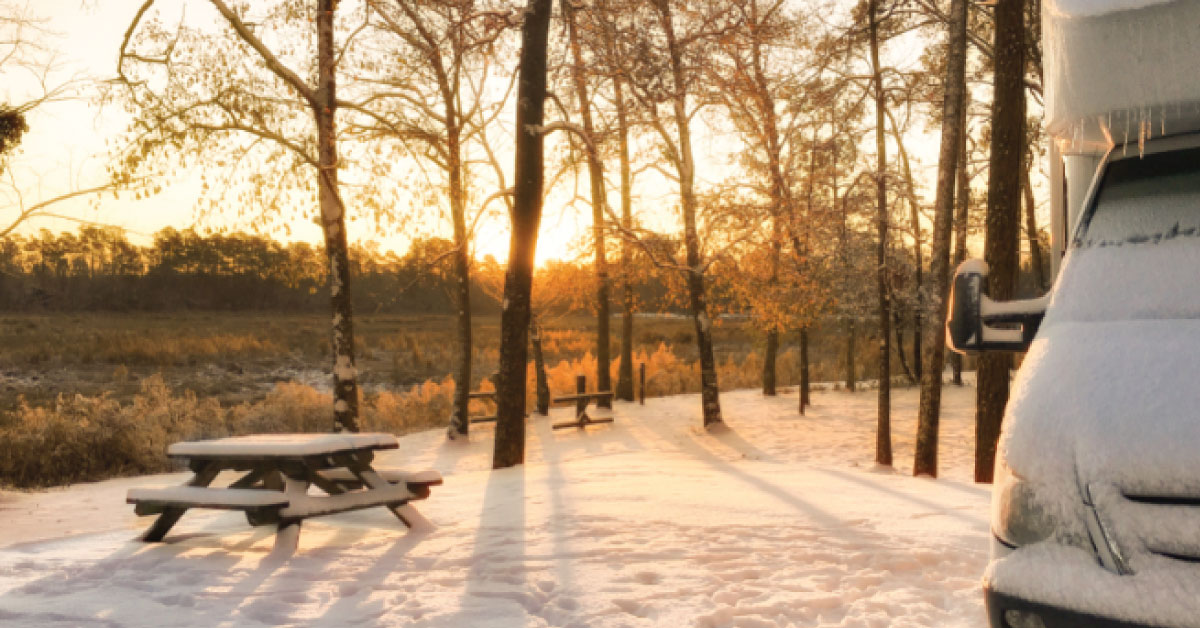
01 Oct Prepare your RV for winter

With the camping season almost over, now is the time to get your RV ready for winter.
We’ve included a list of the main things to look at, but we still recommend that you speak with your dealer or someone experienced in winterizing an RV. Especially if this is your first experience.
Step 1: Empty your fluids
Leaving any fluids in your pipes would , as you can probably imagine, lead to burst pipes when the cold temperatures arrive. It is therefore extremely important to make sure that all the water in the tanks of your RV is evacuated: fresh, gray and black water.
Before doing this, be sure to turn your water heater OFF.
It is necessary to drain and flush:
- The kitchen faucet
- The bathroom faucet
- Indoor and outdoor shower
- The toilet bowls
- The hot water tank
- The sewer tank
- The fresh water tank
Step 2: Add antifreeze
To properly protect your plumbing, the use of -50 ° C antifreeze is recommended.
Here is how to do it:
IMPORTANT: Set your water heater in winter mode to prevent antifreeze from entering and damaging it.

- You must first insert the hose of your water pump into the gallon of antifreeze.
- Start the pump to circulate the antifreeze in the ducts and open all the faucets (including the outdoor shower and the washer), starting with the closest faucet. Slowly open the hot and then cold valves until antifreeze appears. Repeat this process on all faucets from the closest to the farthest away.
- Pour some antifreeze in sinks, in the toilet and in the shower drain.
- Note: For the washer, we recommend running it on warm, pouring in a full gallon of non-toxic antifreeze. Then setting it to the spin cycle and, finally, put some antifreeze in the drain located at the bottom of the appliance.
Step 3: Clean and store
Cabinets, refrigerator … Everything must be cleaned and, above all, avoid leaving food that can attract vermin.
Note that rodents also enjoy paper towels so it would be wise to take them out of the RV and scatter dryer sheets or mothballs all over the place.
Be sure to also inspect your RV for any openings and plumbing holes that could let these little beasts in.
Step 4: Store and insulate
Before storing your RV:
- Turn off the propane tanks. It is preferable that they are full to avoid corrosion.
- Unplug batteries and place them in a location that will not freeze. It is also suggested to charge them a few times during the winter.
- Make sure your gas tank is full to avoid condensation (in the case of a motorhome).
Obviously, storing your RV indoors is preferable since it will not be subjected to temperature fluctuations, but if that is not possible, here are some things to consider for outdoor storage:
- Put stabilizers on the wheels and place your RV on a slight incline and avoid parking on the lawn.
- Make sure windows and doors are properly sealed.
- Check the seals.
- Insulate all plumbing holes.
- Protect the air conditioning with a canvas.
- Watch for snow accumulation on the roof and remove snow regularly and carefully. If you opt for an RV cover, make sure it does not trap water or ice. The roof must breathe.
Jackie Beaudoin, Leclerc Insurance and Financial Services



